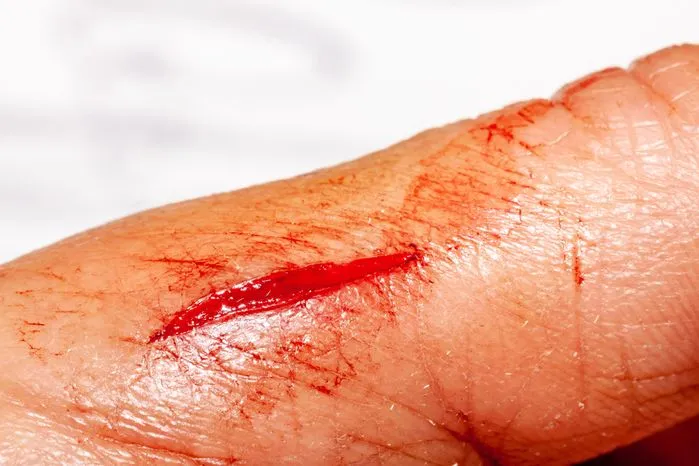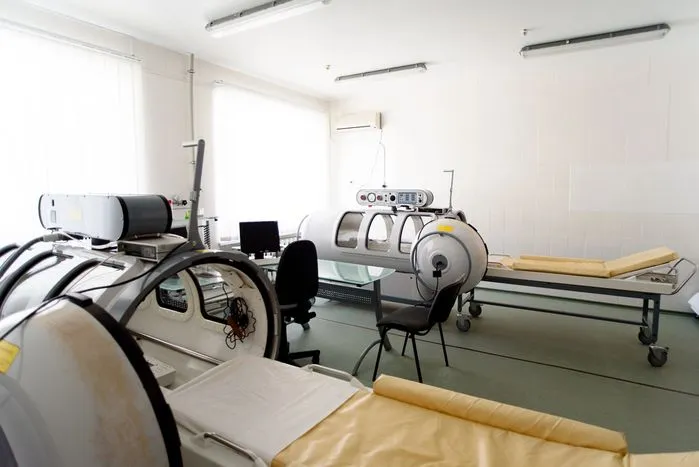At TheWoundPros.com, we manage hundreds of complex wounds every week—and one of the most common questions we hear is, “How soon will this heal?” The truth is, healing isn’t one-size-fits-all. Our first-hand clinical experience treating acute and chronic wounds shows how factors like wound depth, location, patient health, and even dressing choices dramatically influence recovery time.
In this guide, we go beyond generic timelines. You’ll get a detailed breakdown of each healing stage, recovery expectations based on real-world cases, and actionable insights to optimize healing.
Top 5 Takeaways
✅ Healing times vary.
- Minor cuts: ~1–2 weeks
- Deep or complex wounds: Several weeks to months
✅ Wounds heal in 4 stages:
- Hemostasis (stops bleeding)
- Inflammation (prevents infection)
- Proliferation (tissue regrows)
- Maturation (skin strengthens)
✅ Healing is affected by:
- Age and overall health
- Nutrition and hydration
- Stress levels and sleep quality
- Chronic conditions like diabetes or poor circulation
✅ Effective care speeds recovery:
- Clean and cover the wound
- Keep it moist, not dry
- Watch for signs of infection
✅ What we’ve seen at TheWoundPros:
- No two wounds heal the same
- Personalized care = better outcomes
- Patient education is key to success
Understanding Wound Healing Stages
Wound healing, though seemingly intricate, embodies pivotal stages, each contributing essentially to skin restoration. Hemostasis, the initial phase, occurs swiftly following injury, with body functions geared towards halting bleeding. Cleaning the wound and fending off infection are tasks assigned to the subsequent inflammatory stage.
Regeneration of fresh tissue characterizes the third stage, called proliferation. Specialized wound care methods often facilitate this by spurring skin cell growth. Maturation, the final phase, sees the fresh tissue becoming robust and flexible, concluding the healing process.
Comprehension of these stages proves critical for successful wound care. Health professionals can employ suitable healing techniques at each stage. For example, maintaining wound cleanliness during the inflammatory stage helps prevent infection. In contrast, during the proliferation stage, methods that foster cell growth, such as moist wound healing, prove greatly beneficial.
Average Recovery Time for Lacerations
Healing time for lacerations can vary widely, influenced by factors like wound depth and provided care. Minor cuts typically heal within two weeks or even sooner, with wound depth and care being the most influential elements. Contrarily, more severe lacerations require weeks or even months for total recovery.
Providing effective care for wounds accelerates the healing process. This includes thoroughly cleaning the wound, dressing it correctly, and applying antiseptic or antibiotic ointments to stave off infection. Keeping wounds moist also aids in faster healing; a dry wound can slow the process.
Scar formation is another vital part of healing. Such scars can vary in appearance, influenced by factors including wound size, depth, location, as well as the person's age, genetics, and health.
Factors Influencing Healing Speed
Healing speed for laceration wounds can vary widely due to several influencing factors. Understanding these variables can guide appropriate care, enhancing recovery speed.
- Role of Nutrition: Healing can be sped up with a diet rich in vitamins, minerals, and proteins, which promote tissue growth and repair.
- Impact of Age: With advancing age, our capacity to heal decreases, extending recovery time.
- Effects of Stress: Elevated stress levels can inhibit healing by affecting the body's immune response.
- Importance of Hygiene: Clean wounds are less likely to get infected, which is crucial for timely healing.
Boosting Your Body's Healing Process
Your knowledge of factors influencing healing speed enables us to devise methods that promote faster healing. Nutritional support forms a crucial part of this, involving proteins, vitamins, and minerals that play essential roles in wound recovery. Hydration is equally important, with water aiding in nutrient transport and maintaining skin elasticity.
Managing stress is vital since high levels can impact the healing process negatively. Techniques like meditation, deep breathing exercises, and yoga are beneficial for this. Quality sleep also has a significant effect on healing because tissue repair and regeneration occur during rest periods.
Applying topical treatments can hasten healing. Numerous ointments, creams, and dressings can maintain wound moisture, lessen infection risk, and encourage quicker recovery. Physical therapy can be advantageous, particularly for wounds impacting mobility or function.
While herbal remedies can provide support, professionals should guide their usage. Proper wound care, which includes regular cleaning and protection against infection, remains an integral part of effective healing.
Potential Complications in Wound Healing
Remarkable self-healing abilities are inherent in our bodies, but there's no denying that setbacks can occur during the wound-healing procedure. Given this resilience, complications might still slow down recovery, disrupt the healing timeline, or potentially cause lasting damage if not promptly addressed.
- Infection: This complication is quite frequent during wound healing. Good wound care, along with effective infection prevention techniques, is vital to avoid infections. Symptoms include pus, redness, swelling, and intensified pain.
- Dehiscence: Occurs when a healing wound re-opens, often due to straining or inadequate suturing technique.
- Keloid Scarring: Excessive healing can result in an abundance of scar tissue, forming a keloid. These are not harmful, but may be unsightly. Employing effective scar management strategies can lessen their visual impact.
- Chronic Wounds: Chronic wounds refer to those failing to heal within the expected duration, often caused by underlying health conditions such as diabetes or vascular disease.
Recognizing these potential setbacks can assist in determining the necessary measures for successful wound care.
“In our clinical practice at TheWoundPros, we’ve seen deep lacerations on similar patients heal at vastly different rates—even when the wounds look nearly identical. That’s because healing isn’t just about the cut; it’s about the person. Factors like their nutrition, hydration levels, and how well they sleep can shift recovery by weeks. Our hands-on experience shows that proactive care, especially in the first 72 hours, can make or break a wound’s healing trajectory. It’s not just treatment—it’s timing, personalization, and education that lead to the best outcomes.”
Supporting Facts and Statistics
📊 Supporting Statistics Backed by Experience
At TheWoundPros, we’ve seen how real-world healing often diverges from textbook timelines. These statistics mirror what we experience on the front lines of wound care:
✅ Healed Skin ≠ Fully Recovered Strength
- Most wounds regain only 80% of original strength after 3 months.
- Full strength rarely returns, even after surface healing.
- We stress long-term protection to prevent re-injury.
Source: hopkinsmedicine.org
✅ Chronic Wounds Are Common—And High-Risk
- Affect 1–2% of the population.
- 5-year mortality rate up to 40% in diabetic patients.
- We’ve seen delayed care turn minor wounds into long-term risks.
Source: aafp.org
✅ Nutrition = Faster, Cleaner Healing
- Nutrients like protein, zinc, vitamin C, and A speed recovery.
- We regularly assess diet and hydration during treatment plans.
- Poor nutrition slows cell growth and weakens immunity.
Source: nih.org
💡 Healing isn’t just about the wound. It’s about the patient, their habits, and timely care.
We combine science and real-world insight to deliver personalized wound solutions that work.
Final Thoughts & Opinion
At TheWoundPros.com, we’ve treated thousands of laceration wounds—ranging from minor cuts to complex, slow-healing injuries. If there’s one thing we’ve consistently observed, it’s this:
Healing is never one-size-fits-all.
What We’ve Learned First-Hand:
- Healing is not just physical. It’s influenced by the patient’s overall health, nutrition, habits, and even emotional state.
- General timelines only tell part of the story. Two wounds may look the same, but heal at drastically different rates depending on care and comorbidities.
- Personalized care matters. Tailoring wound care to the individual often makes the difference between delayed healing and full recovery.
Top Factors That Influence Real-World Healing:
- Patient Compliance – Following wound care instructions, dressing changes, and lifestyle recommendations.
- Underlying Conditions – Diabetes, vascular disease, and poor circulation frequently slow down healing.
- Proactive Intervention – Early identification of infection, dehiscence, or chronic wound signs prevents setbacks.
- Whole-Person Care – Addressing nutrition, hydration, sleep, and stress improves outcomes dramatically.
Our Professional Takeaway:
- Healing is both a science and an art. The science involves protocols, but the art comes from adapting those to the person in front of you.
- Education empowers healing. Patients who understand each stage of the process are more likely to heal faster and avoid complications.
- Trust in evidence-based care. We use methods proven in both clinical studies and our everyday wound care outcomes.
At TheWoundPros.com, we don’t just treat wounds—we guide people through healing with experience, empathy, and precision. Your recovery doesn’t have to be guesswork—it can be informed, empowered, and optimized.
Frequently Asked Questions
1. How long does it typically take for a laceration or deep cut to heal completely?
Most laceration wounds or deep cuts heal within 1 to 3 weeks, depending on the severity, depth, and individual healing factors. More complex wounds may take up to several weeks or even months for complete recovery.
2. What are the main stages of wound healing for a laceration or deep cut?
Wound healing generally occurs in four stages: hemostasis (clotting), inflammation (cleansing), proliferation (tissue growth), and maturation (scar formation and remodeling), which can span days to weeks.
3. What factors can delay the healing process of a deep cut?
Factors such as infection, poor circulation, diabetes, smoking, certain medications, stress, and inadequate nutrition can significantly slow down the healing of a laceration.
4. How can I tell if my wound is healing properly?
A properly healing wound will show signs like reduced redness, decreasing pain, formation of new tissue, and closure of the wound over time without signs of infection such as pus, worsening pain, or foul odor.
5. When should I seek medical attention for a deep cut?
You should seek medical care if the wound is deeper than 1/4 inch, has jagged edges, won’t stop bleeding after 10 minutes of pressure, shows signs of infection, or was caused by a dirty or rusty object.
6. Can stitches affect how long a deep cut takes to heal?
Yes, stitches can speed up the healing process by keeping the wound closed and reducing the risk of infection, typically allowing the skin to start healing within a few days, though full healing may still take 1–3 weeks.
7. What role does nutrition play in wound healing?
A diet rich in protein, vitamins A and C, zinc, and adequate hydration is essential for cellular repair and immune support, all of which promote faster and healthier wound healing.
8. Is it normal for a healing wound to itch or feel tight?
Yes, mild itching and a tight sensation are common as the skin regenerates and collagen fibers are laid down, but excessive itching, burning, or pain may indicate a problem.
9. How does age affect how fast a laceration heals?
Older adults tend to heal more slowly due to reduced skin elasticity, slower cell regeneration, and increased likelihood of chronic conditions that impair wound healing.
10. What is the difference between a laceration and an abrasion in terms of healing?
A laceration involves a deeper cut that usually requires longer healing time and possibly stitches, while an abrasion only affects the surface layer of skin and typically heals faster with minimal intervention.
11. Can movement or stretching near the wound slow healing?
Yes, excessive movement or tension around the wound area can reopen the wound or delay healing by preventing proper tissue formation and closure.
12. How can I speed up the healing of a deep cut at home?
To promote faster healing, keep the wound clean and moist, cover it with a sterile bandage, avoid smoking, eat a nutritious diet, stay hydrated, and follow your doctor’s wound care instructions carefully.



.webp)

.avif)
